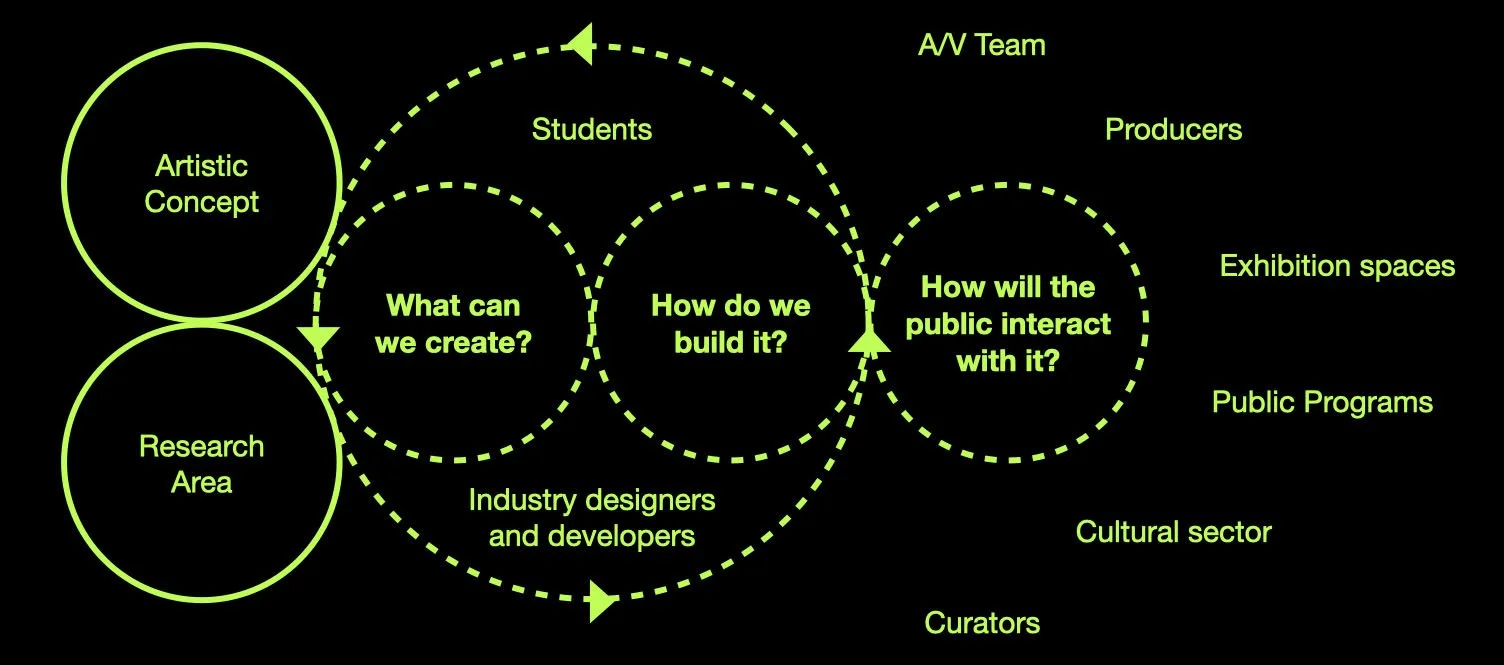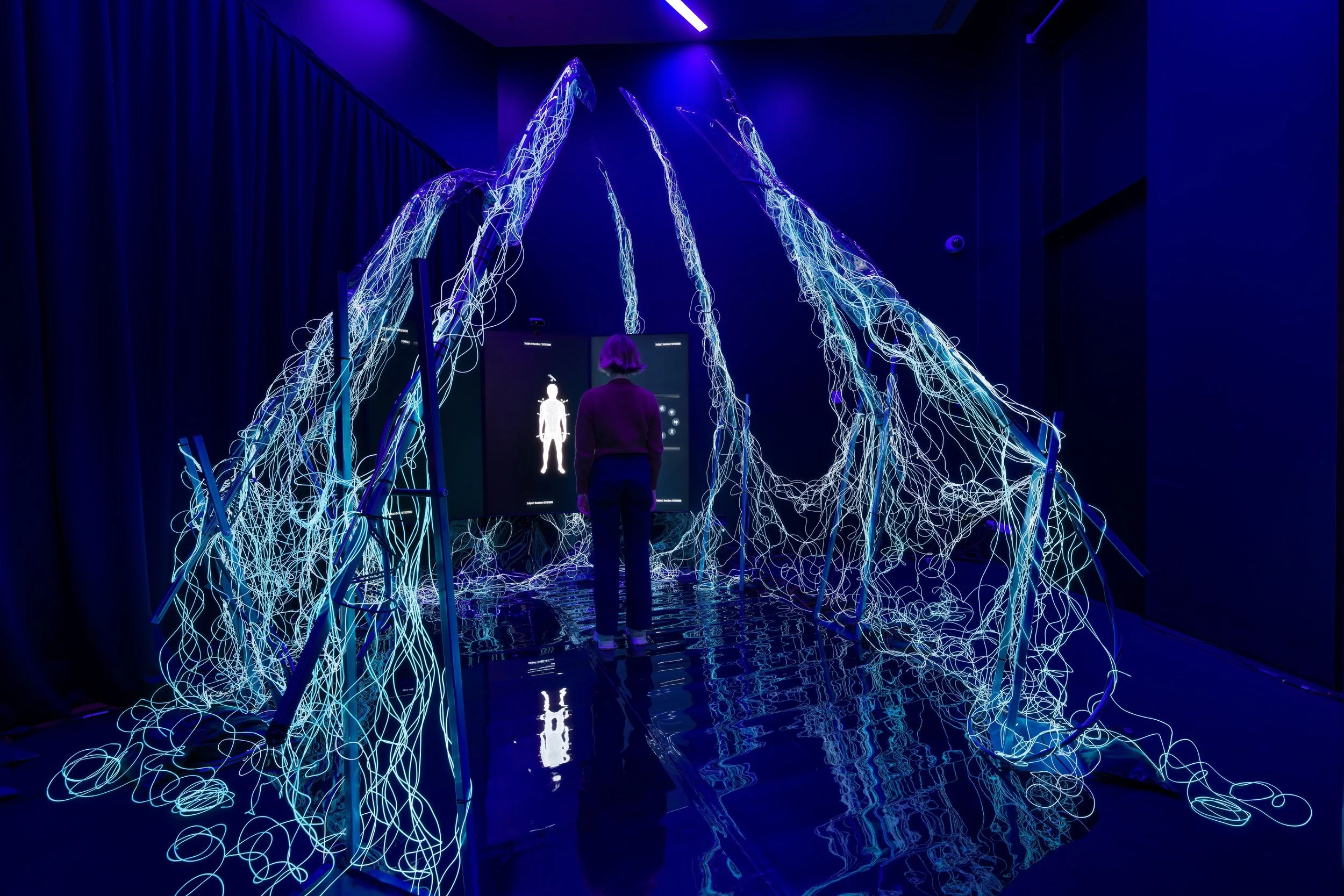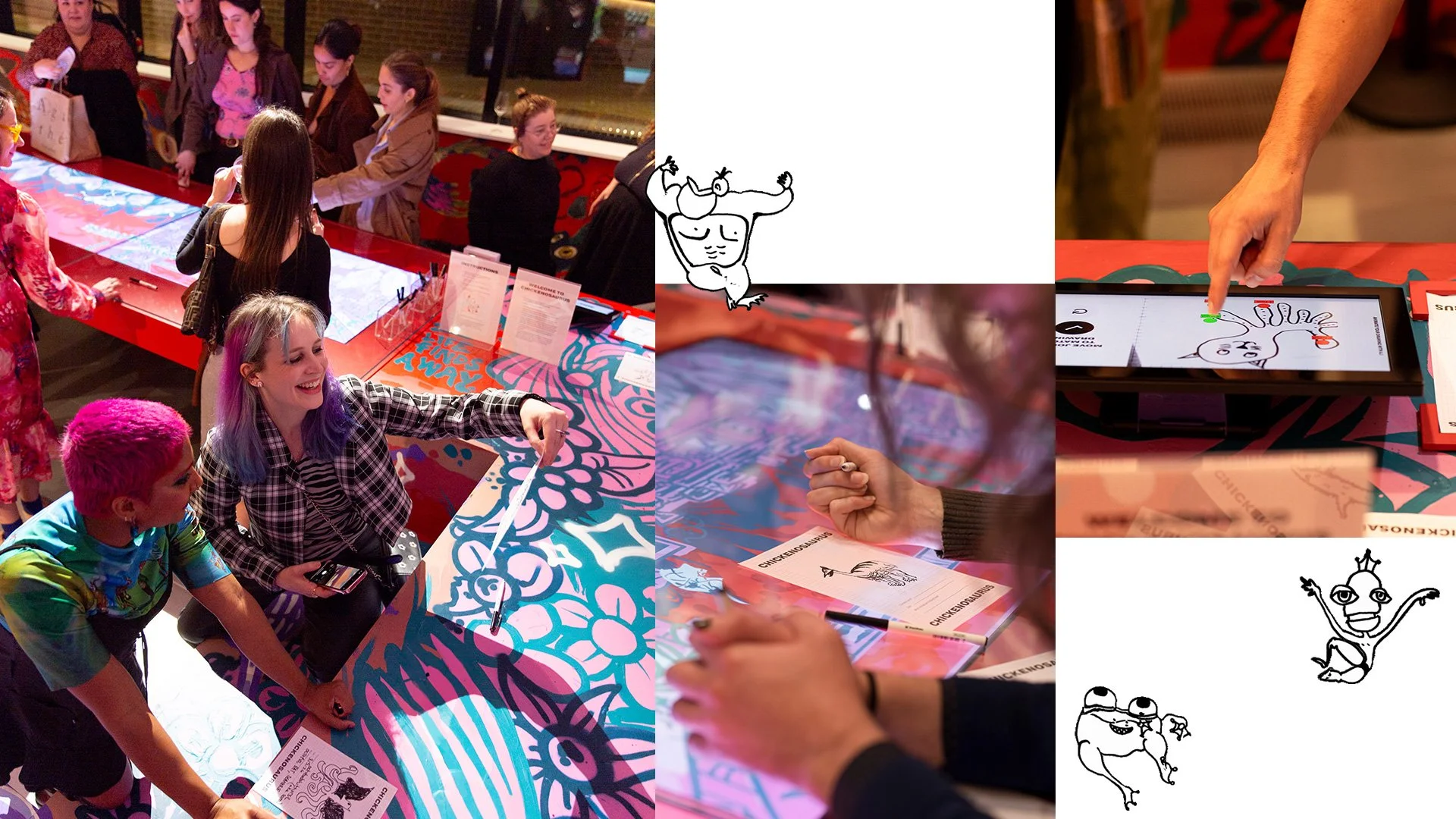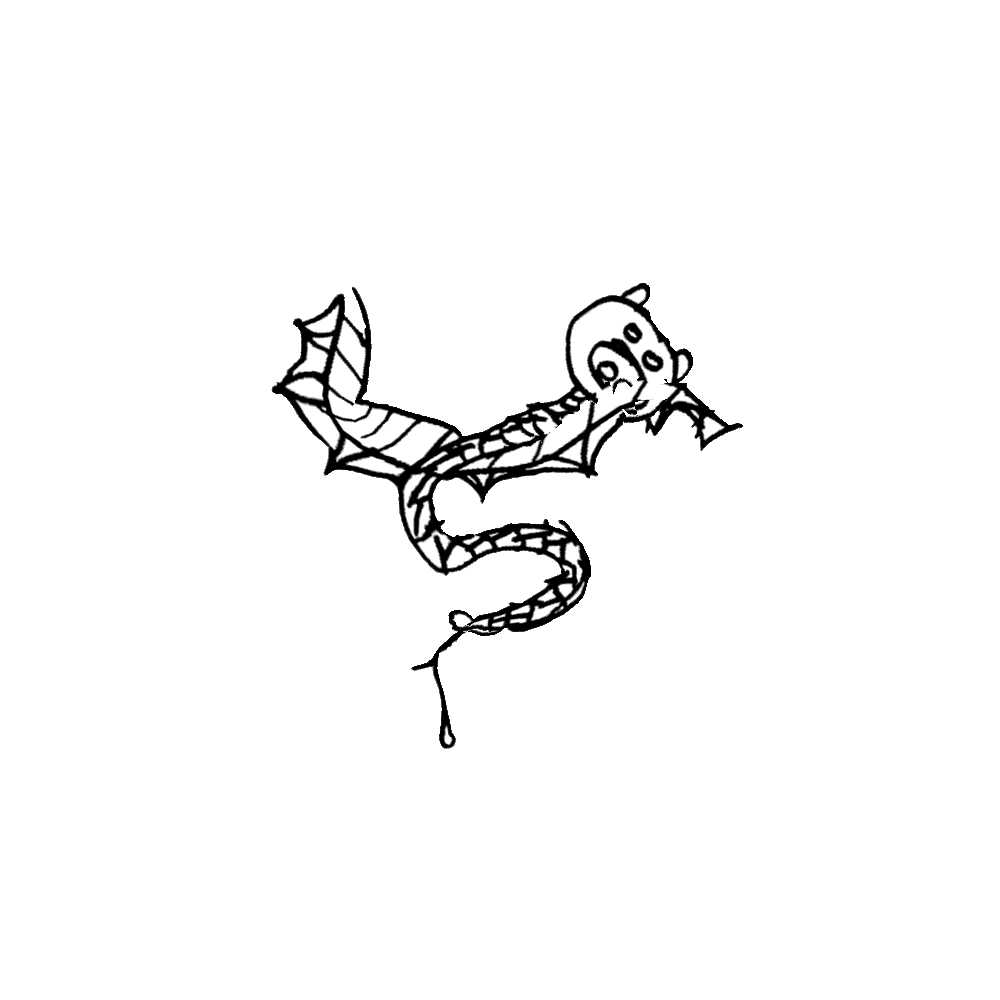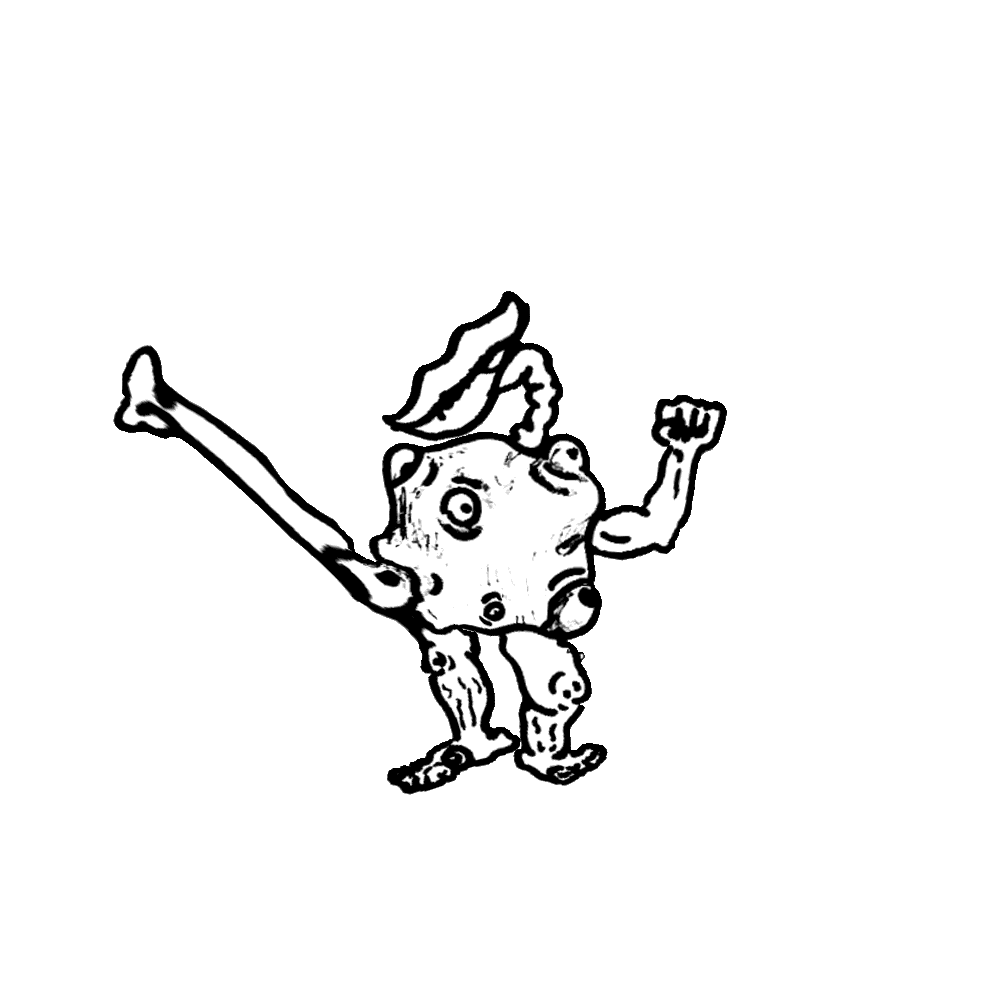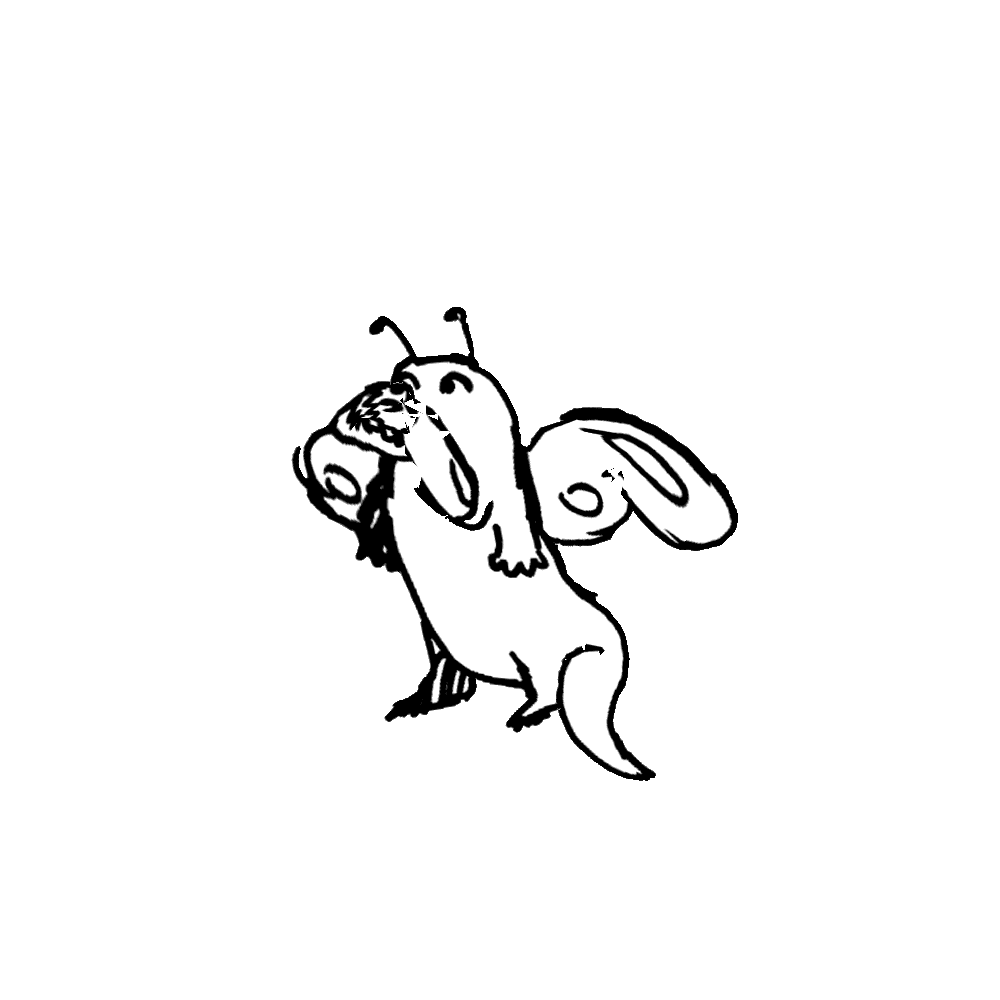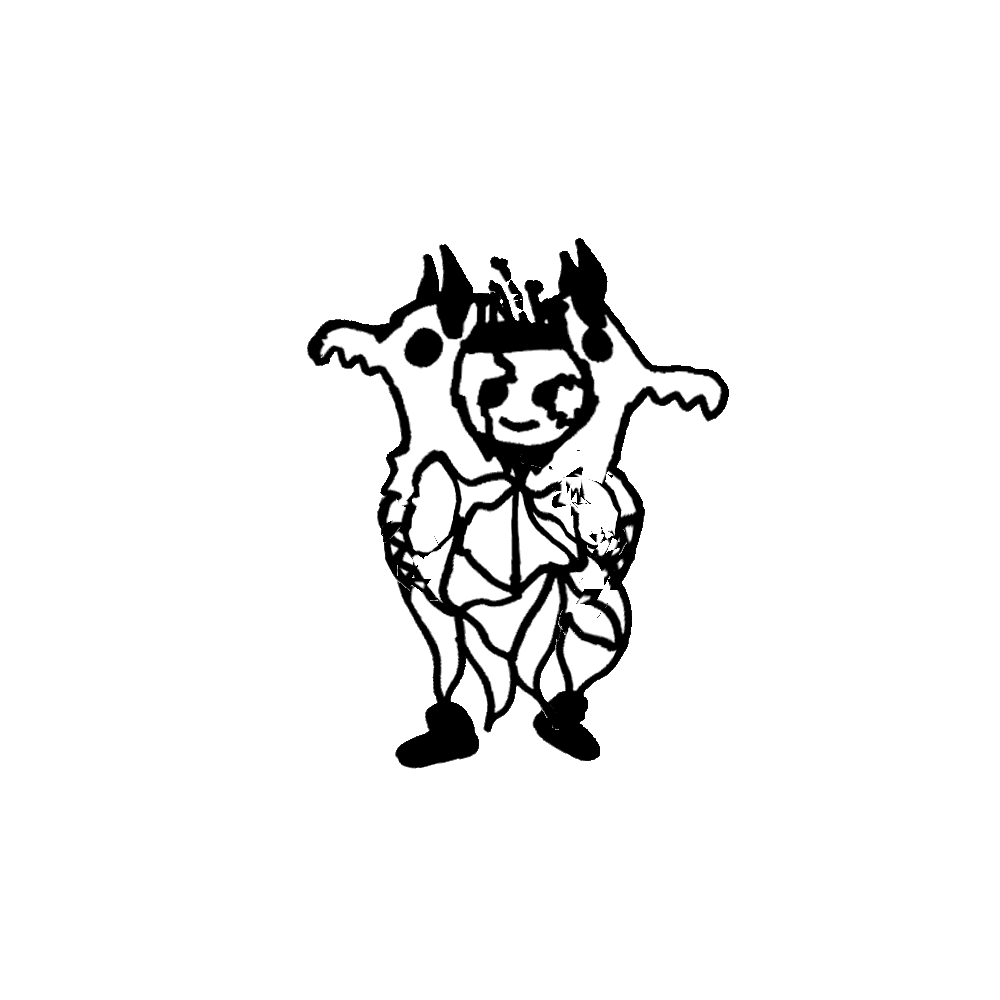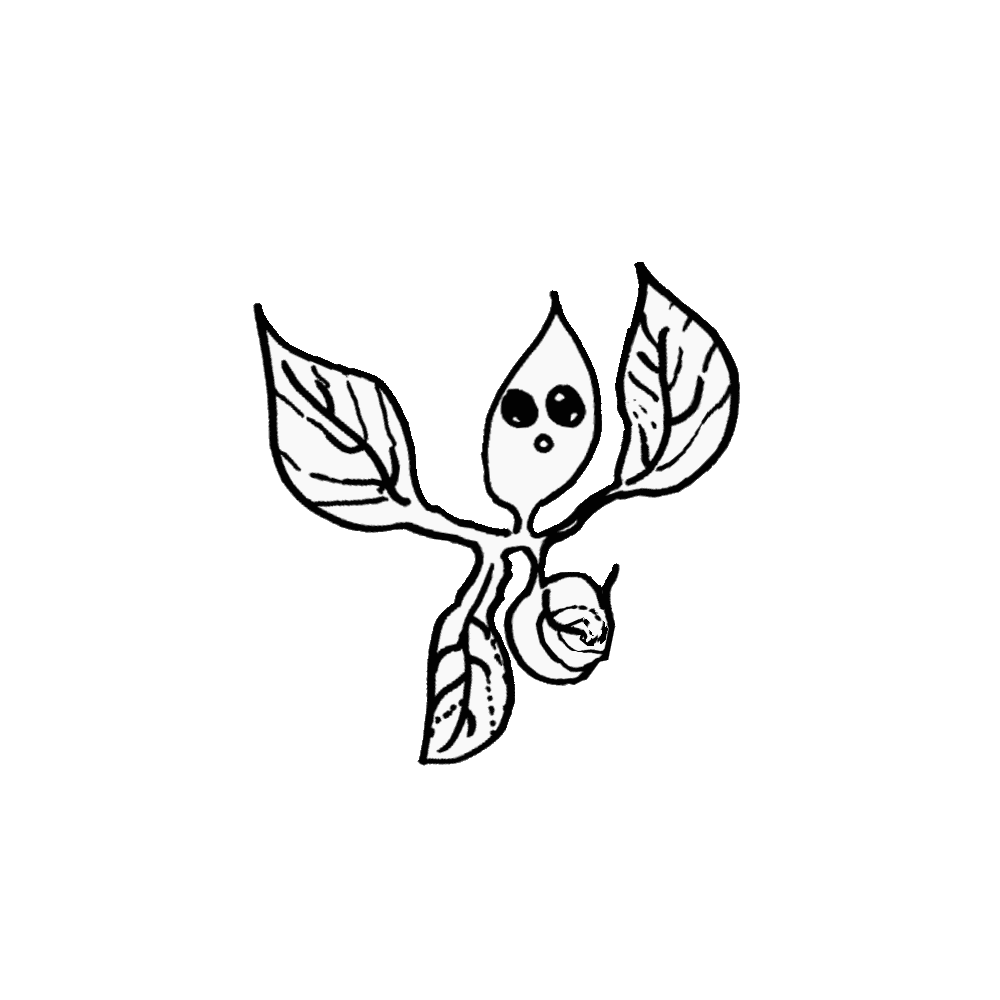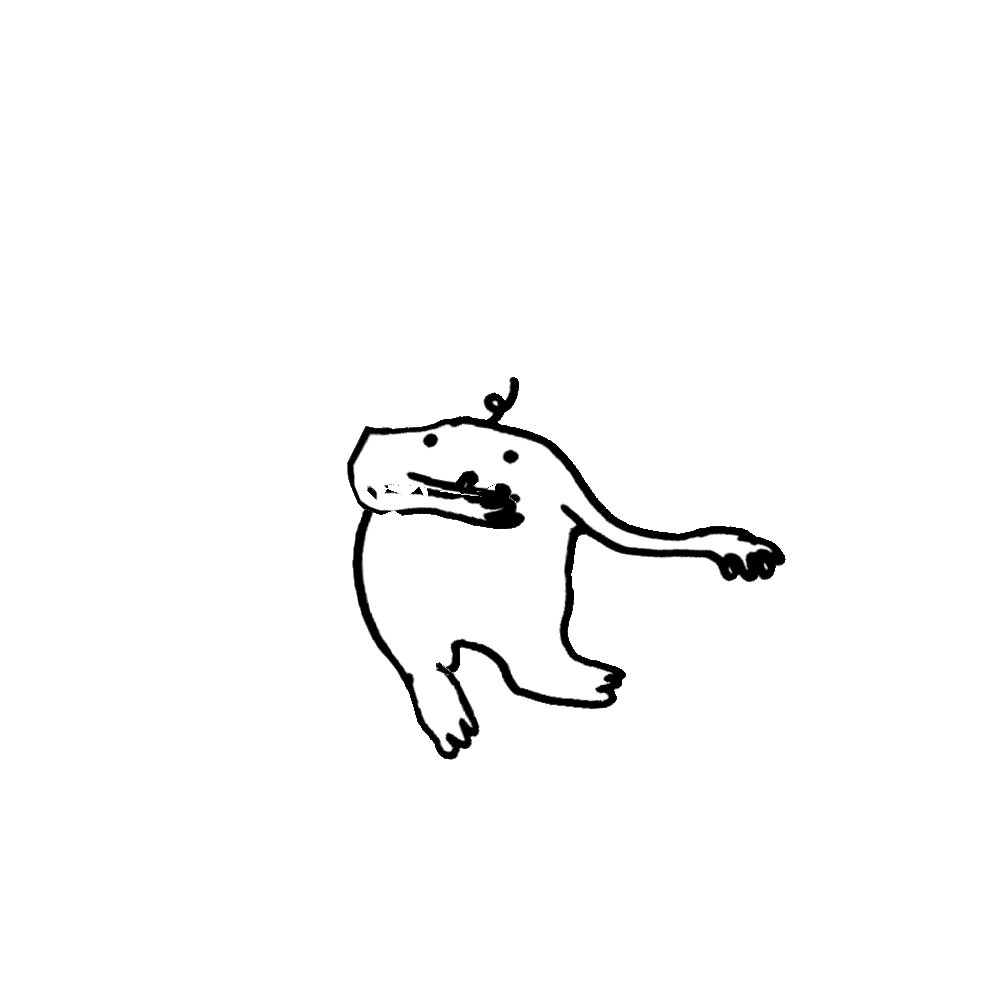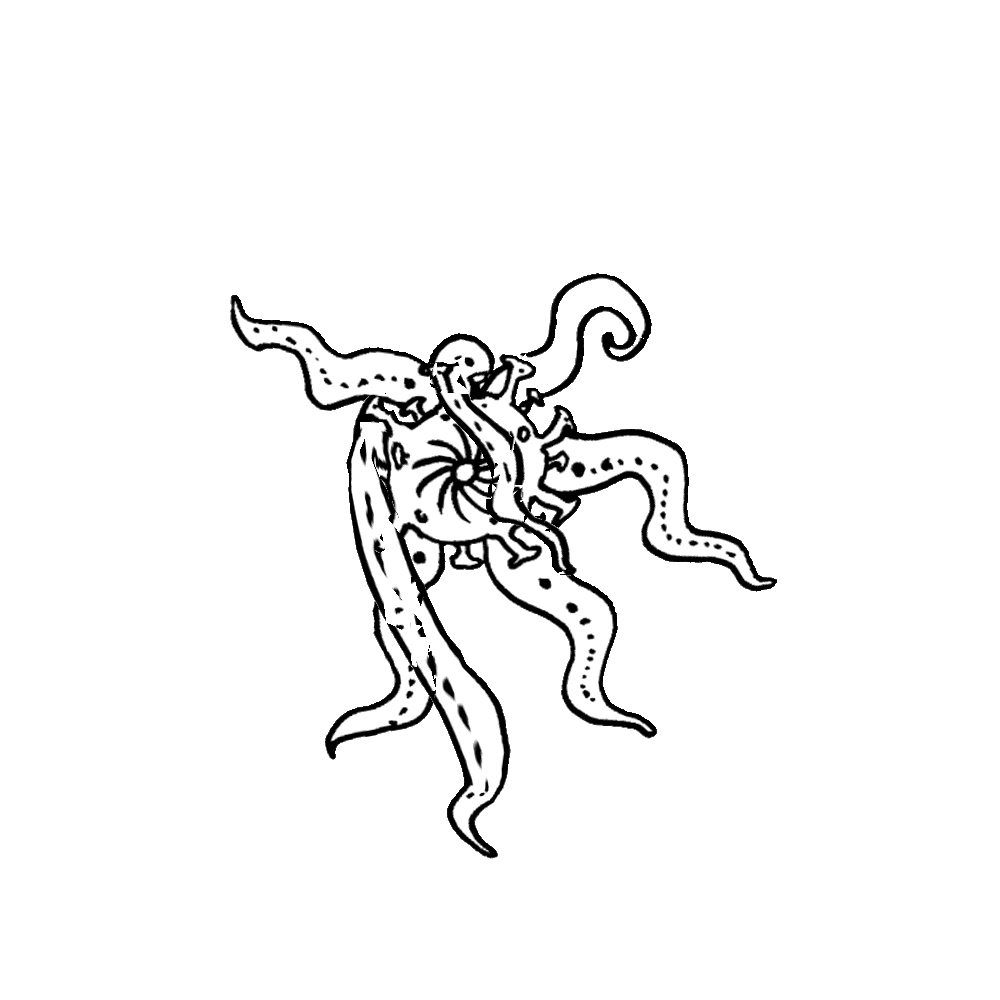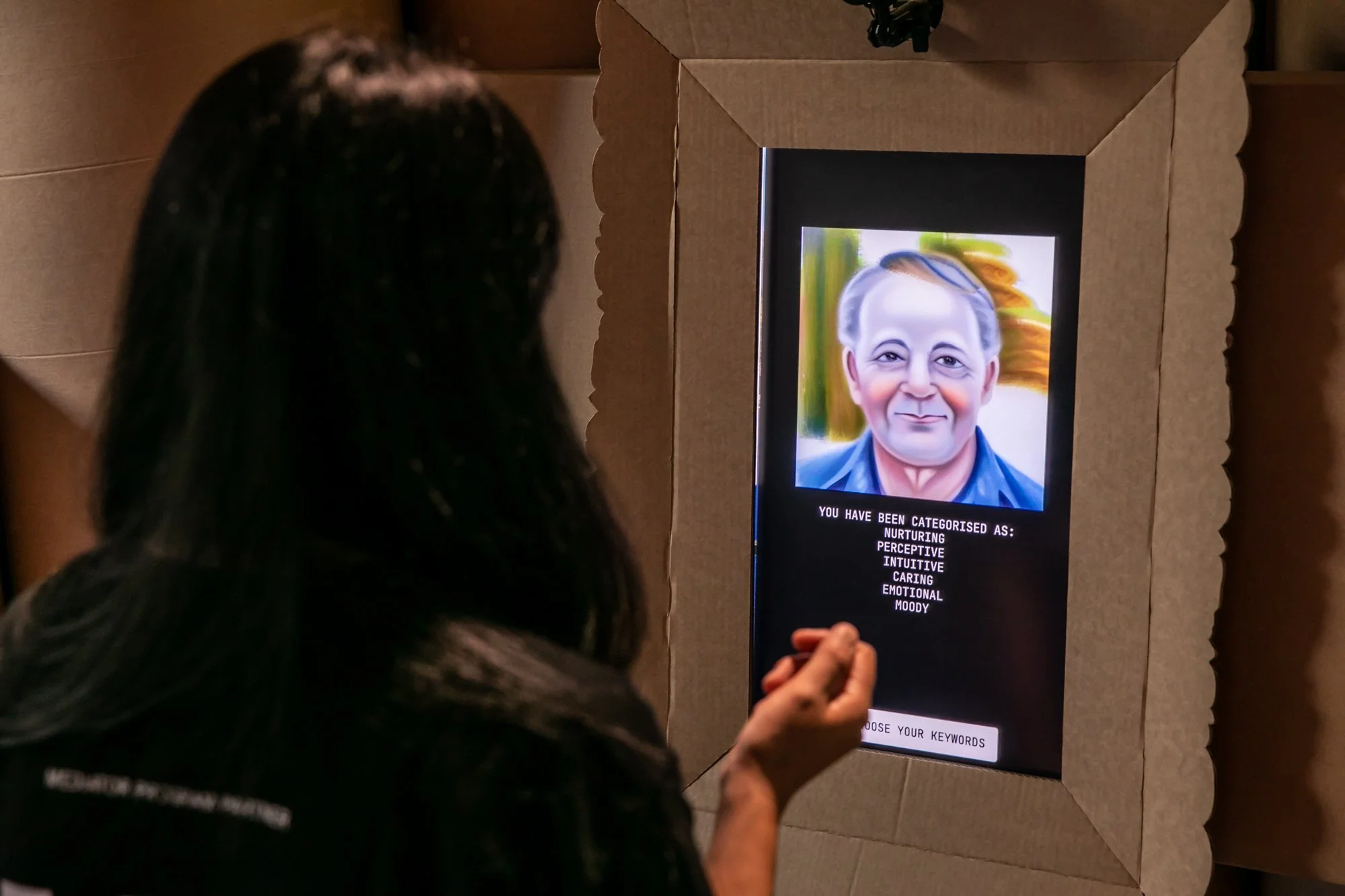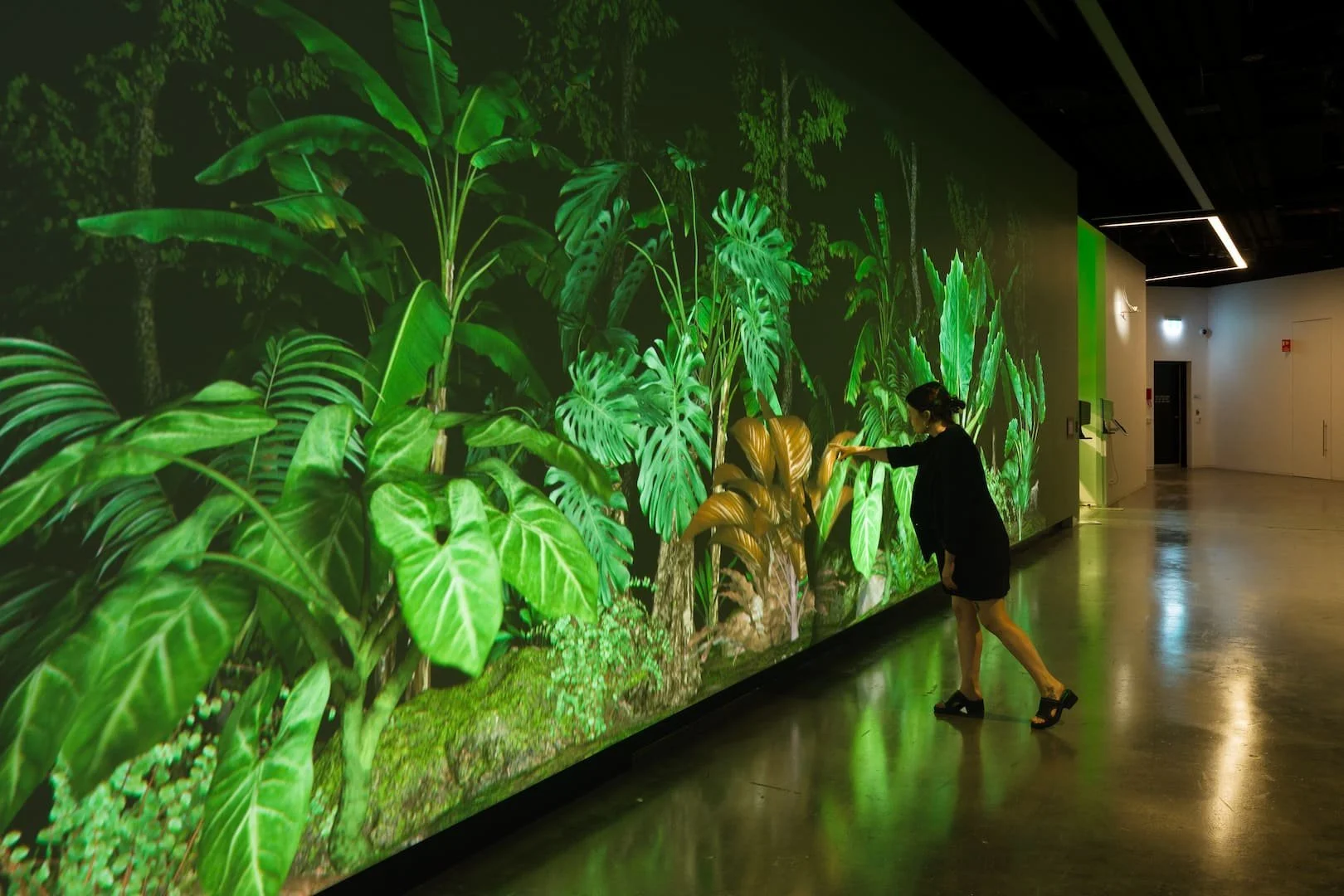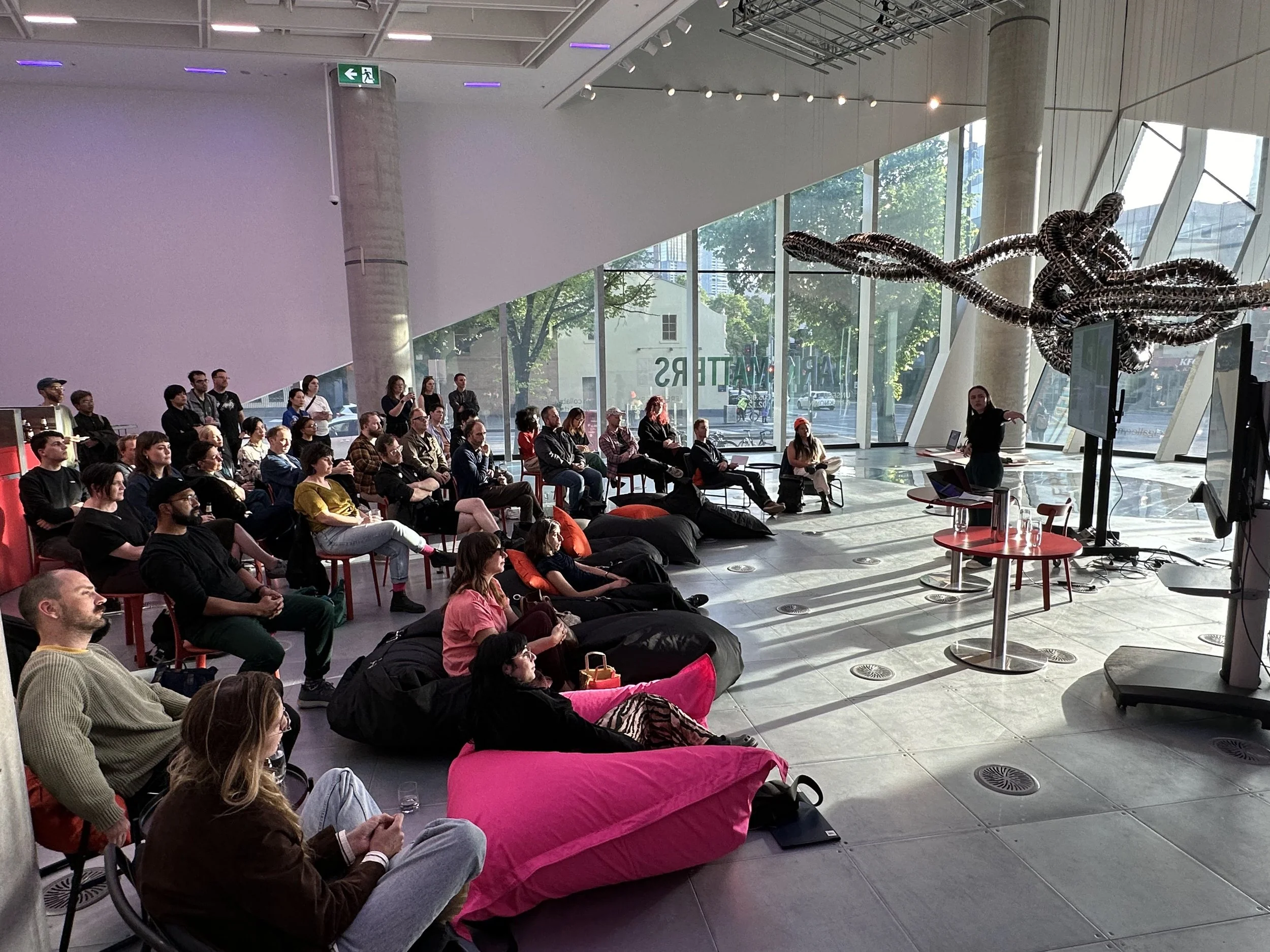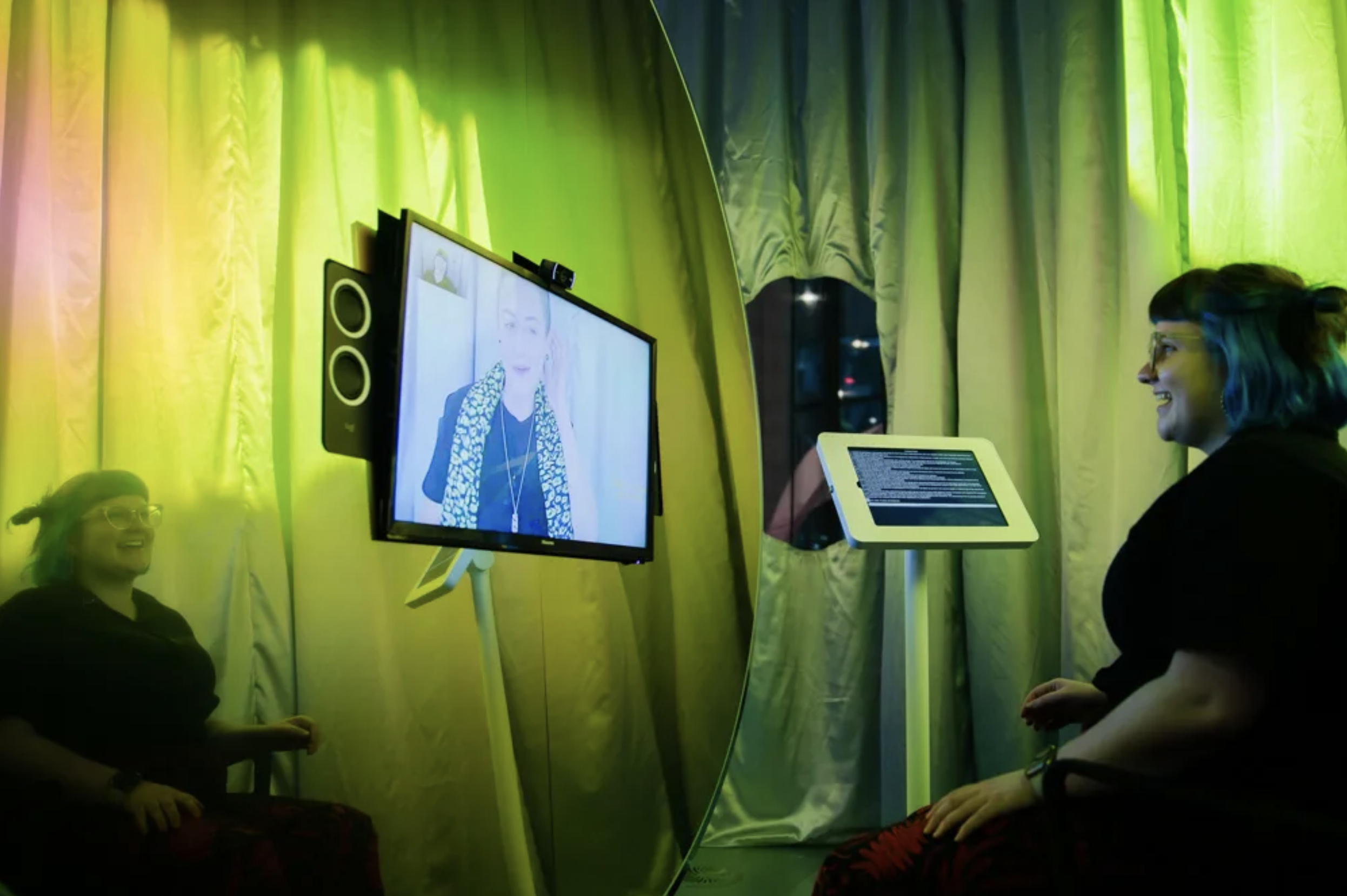TARS
SOMETHING NEW IS COMING
•
ART + RESEARCH
•
SOMETHING NEW IS COMING • ART + RESEARCH •
An emerging technology PRACTICE-BASED incubatOR AND STUDIO FOR artists and researchers
A WORK IN PROGRESS COLLABORATION BETWEEN THE SCHOOL OF COMPUTING AND INFORMATION SYSTEMS (CIS), SCIENCE GALLERY MELBOURNE (SGM) AND MUSEUMS AND COLLECTIONS (M&C) AT THE UNIVERSITY OF MELBOURNE, AUSTRALIA
HOW CAN WE USE THE MEDIUM OF ART TO COMMUNICATE THE RESEARCH QUESTIONS WE CARE MOST ABOUT?
AI AND DIGITAL ETHICS
GUàI
MINDY MENG WANG AND MONICA LIM
This immersive interactive uses emotion recognition biometric AI to analyse participants’ personal attributes and match them to a fantastical monster avatar from the Chinese mythical text 山海经 Shan Hai Jing (Classic of Mountains and Seas) from 4th century BCE. Catch elemental balls to evolve the avatar while discovering a custom interactive soundtrack created with machine learning.
Guài 怪 means strange, or monster, in Chinese. Chinese face reading or anthroposcopy is an ancient philosophy practised over centuries where facial attributes are linked to human characteristics. Modern-day AI biometric profiling has been used in wide-ranging applications from medicine, statistics, crime prevention and e-commerce.
Is AI-based biometric analysis any more accurate than ancient face reading practices?
https://melbourne.sciencegallery.com/sci-fi-chapters-new-nature/guai
ECHO CHAMBER
MONICA LIM
Echo Chamber is a participatory sound installation where visitors are invited to experience multiple AI-generated versions of their own piano-playing, played back through a multichannel speaker chorus surrounding them.
The work alludes to concerns about generative AI reinforcing a monoculture through a feedback cycle of data scraping, copying and regenerating. By using the visitors’ own musical input and creating an embodied experience, we allow visitors to come to their own critical reflections on the ethics of data scraping, AI’s role in amplifying bias against underrepresented musical cultures and the creation of socio-cultural echo chambers.
ANTHROPOMORPHIC MACHINE
STELARC
Giving human characteristics to objects is something us humans do all the time. As technology improves and machines become more ‘alive’, will this make us even closer?
Interact with a giant kinetic sculpture that uses principles of human body structure to create a responsive machine that reacts in real time to your gestures.
https://melbourne.sciencegallery.com/swarm-exhibits/anthropomorphic-machine
Chickenosaurus INTERACTIVE
SCIENCE GALLERY MELBOURNE
Enter a world inspired by the fictional (maybe soon to be factual) idea of the chickenosaurus: a theoretical experiment to reactivate ancient dinosaur genes in modern birds.
The Chickenosaurus project – part of the Not Natural exhibition – is an experimental immersive play area, where visitors are encouraged to draw their own chimera creature to animate and display in the gallery.
Using AI, drawn illustrations will animate and appear in a collective gallery of imagined speculative animals.
Chickenosaurus asks the question, just because we can, should we?
https://melbourne.sciencegallery.com/not-natural-exhibits/chickenosaurus
BIOMETRIC MIRROR
Lucy McRae, Niels Wouters AND NICK SMITH
Biometric Mirror is a research based Sci Fi installation that questions the accuracy and assumptions of facial recognition algorithms.
Participants will enter a futuristic Sci Fi beauty salon and have an AI scan their biometric data and reveal a mathematically ‘perfect’ version of their own face based on the ideals of the Marquardt mask, developed by a Hollywood plastic surgery.
Whose version of perfection is it?
Scrape Elegy
Willoh Weiland, Gabby Bush, Monica Lim, Lauren Stellar, Misha Mikho
With the Centre for AI and Digital Ethics at the University of Melbourne, Autex Acoustics and Lofetcetera Studios
What skeletons are in your digital closet?
You might have felt cute, but you didn’t delete it later, did you? This is a journey through your own data – starting at a single point. A monument to the digital graveyard you have created. A mourning poem for the late capitalist hell that makes even the worst of us valuable.
Users are taken through a series of prompts in the iPad. Once information has been shared, users are invited into the structure where they will sit on the pink toilet to listen to their audio journey.
https://melbourne.sciencegallery.com/swarm-exhibits/scrape-elegy
SELF_PORTRAIT
J. Rosenbaum
Self_Portrait will attempt to get to know you – using only a scan of your face. It’ll assign you some labels based on gendered assumptions.
Then you pick and choose the labels to keep, producing an augmented reality mask that changes how the machine sees you. How will your decisions train the machine to think?
How will you choose to identify?
https://melbourne.sciencegallery.com/break-the-binaries-exhibits/selfportrait
Biometric Mirror: Performance Under Surveillance
MINDY MENG WANG AND NEILS WOUTERS
Inspired by the influences of technology on human emotion, Biometric Mirror is more than just a reflection - it reveals unknown truths about its viewer.
During the performance session, Biometric Mirror will guide you on an intimate journey to rethink your own understanding of the organic nature of performance. The mirror is watching.
https://apam.org.au/event/biometric-mirror-performance-under-surveillance/
NEW INTERFACES
FIELDS
SCIENCE GALLERY MELBOURNE
FIELDS is an extension of all artworks exhibited at Science Gallery Melbourne.
With the help of Artificial Intelligence (GPT-3), visitors are able to have conversations with each other around the themes of each artwork beyond time and space. These conversation threads contribute to what we’ve called a Field.
Every artwork label cycles through a series of questions from their Field. Visitors are able answer the questions they choose which are then transformed, by GPT-3, into a new question for more visitors to answer.
DIGITAL BRICKS
SCIENCE GALLERY MELBOURNE AND MELBOURNE CONNECT
The Digital Bricks are large format LED screens behind glass bricks as part of the entrance facade to Science Gallery Melbourne.
Exploring what would happen ‘if these walls could talk’, the Digital Bricks programming sits as a separate canvas outside of both Exhibitions and Public Programs with opportunities ranging for data visualisation to live performance.
THE HEART
ROBERT WALTON
Can a building have a heart?
The Heart is a site-responsive, slow Artificial Intelligence performance artwork to be lived with over decades. It reveals the pulse of a superorganism: the community visiting, living, and working in Melbourne Connect, a city-block size building, home of businesses, university departments, a kindergarten, accommodation, and a science museum. The Heart beats indefinitely for and with the life of the building and its community.
The Heart is connected to 4800 ‘Building Information Modelling’ (BIM) sensors. These monitor CO2, humidity, room occupancy, temperature, movement, light, and more. The building adjusts the environment to create the optimum conditions for human comfort and safety.
HUMAN EFFECT
YANDELL WALTON
Does the forest want you here?
Step into the lush greenery of this forest where the wall is a canvas for the jungle to drip, seep and thrive with life. Yet as you get closer, the tangled growth will react to your presence. How does this make you feel? As a vibrant scene unfolds, reflect on the impact humans have on the natural environment. In this transient, green paradise you may want to tread softly. Beautiful environments are captivating – but maybe we should be keeping more of a distance for nature’s own good.
What effect does the forest have on you?
https://melbourne.sciencegallery.com/not-natural-exhibits/human-effect
P@TCH
JANNA AHRNDT
Will you truthfully track your environmental goals?
Like a Fitbit for your ethical performance, P@tch is a textile-based new media project inspired by punk and DIY culture. Each homemade P@tch uses self-reporting and environmental sensors to allow the user to track their personal and surrounding pollution.
Presented in partnership with the EPA.
COMMUNITY
CREATIVE TECHNOLOGY MEL
CO-DIRECTED BY MEL HUANG AND DAN MACNISH
Creative Technology Melbourne is an encouraging, welcoming space celebrating all new media experiments that don't fit neatly in a box. Creations that blend technology and creativity. Weird, nonsensical, personal, or deadly serious: We celebrate it all.
An evening of inspiring demos by creative practitioners and an open opportunity for the community to share what they’re working on. Come and connect with like minded multidisciplinary friends in an eclectic night of inspiration, experimentation and community.
INDUSTRY PARTNER
EXHIBITIONIST
Exhibitionist is a creative development company that works with arts organisations and artists.
They build things end to end, in collaboration, and within other teams and stand by an ethos of 'small tech' - their focus is creating ethical, inventive digital platforms that help cultural institutions and artists thrive online.
Exhibitionist to provide technical feasibility consultation, mentorship & build support alongside TARS
EMBEDDED IN CURRICULUM
DESIGNING NOVEL INTERACTIONS (INFO90003)
Designing Novel Interactions students create over 30 physical computing prototypes that examine the future relationships between natural and technological systems. By reimagining both existing systems and speculative new ones, they present not only design solutions but also problems and perspectives that need our immediate attention.
As part of their master’s program, computing students are encouraged to break free from the screen, mouse and keyboard to utilise a range of techniques from embedded systems, wearable electronics, digital fabrication, interactive methodologies and more to extend their practice and build technologies intentionally and critically for the future we want to see.
Designing Novel Interactions is led by Mel Huang, Dr Antony Chacon, Dr Adelaide Genay and Dr Arzoo Atiq from School of Computing and Information Systems, Faculty of Engineering and Information Technology, The University of Melbourne.
RESEARCH IN PRACTICE
Wheel
Hiromi Tango and Dr Emma Burrows
What is the effect of exercise on mood?
Wheel is a collaboration between renowned artist, Hiromi Tango and neuroscientist, Emma Burrows. Step up as a volunteer to help researchers explore the influence of social rewards on your exercise commitment.
Gurrk
Nick Thieberger and Rachel Nordlinger
How does language evolve? And do the words we use define our identity?
Gurrk means blood in the Woi wurrung language of the Wurundjeri people, the traditional custodians of the land that is now part of Melbourne. The original inhabitants of Australia, Aboriginal and Torres Strait Islander peoples, belonged to over 700 different nations. These groups spoke hundreds of different languages, making Australia one of the most linguistically diverse places on Earth. Fewer than 150 of these languages remain in regular use and all but a few are now considered endangered.
In collaboration with Research Unit for Indigenous Language and Social and Cultural Informatics Platform.
https://culturalcommons.edu.au/cms/wp-content/uploads/2020/07/blood.pdf
YOUR FACE IS MUTED
University of Melbourne HCI Group
Connecting and empathising with someone is the key to meaningful conversations – especially when it’s around critical topics like climate change, human rights and mental health advocacy.
Created by University of Melbourne students and researchers over Zoom from different sides of the globe during the 2020 lockdown, this work explores what we lose when the connection is patchy and tests how much we rely on facial cues to communicate with our conversation partner.
Is human connection still possible through a patchy curtain of technology?
https://melbourne.sciencegallery.com/mental-exhibits/your-face-is-muted
